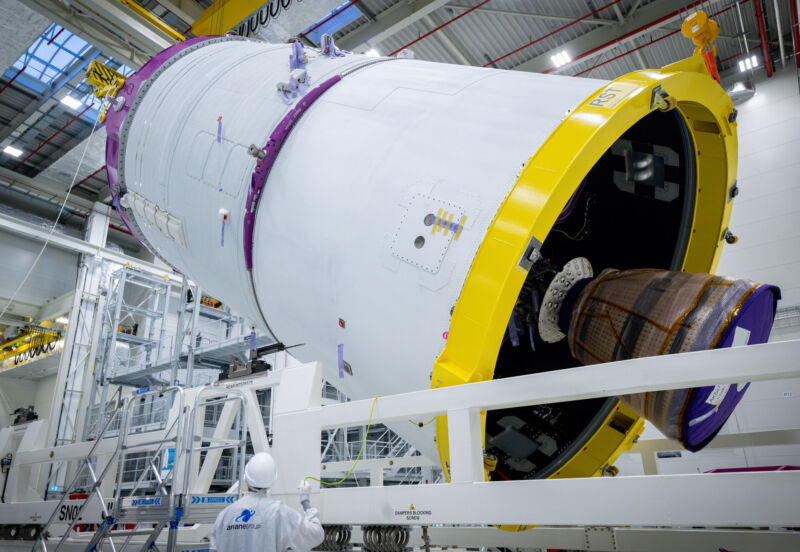Rocket Report: Falcon 9 flies for 300th time; an intriguing launch from Russia

Enlarge / The upper stage for the first Ariane 6 flight vehicle is seen inside its factory in Bremen, Germany. The upper stage's hydrogen-fueled Vinci engine is visible in this image. (credit: ESA - M. Pedoussaut)
Welcome to Edition 6.31 of the Rocket Report! Photographers at Cape Canaveral, Florida, noticed a change to the spaceport's skyline this week. Blue Origin has erected a full-size simulator of its New Glenn rocket vertically on its launch pad for a series of fit checks and tests. Late last year, we reported Blue Origin was serious about getting the oft-delayed New Glenn rocket off the ground by the end of 2024. This is a good sign of progress toward that goal, but there's a long, long way to go. It was fun to watch preparations for the inaugural flights of a few other heavy-lift rockets in the last couple of years (Starship, SLS, and Vulcan). This year, it's New Glenn.
As always, we welcome reader submissions, and if you don't want to miss an issue, please subscribe using the box below (the form will not appear on AMP-enabled versions of the site). Each report will include information on small-, medium-, and heavy-lift rockets, as well as a quick look ahead at the next three launches on the calendar.

Russia launches a classifiedsatellite.On February 9, Russia launched its first orbital mission of the year with the liftoff of a Soyuz-2-1v rocket from the Plesetsk Cosmodrome in the far north of the country. The two-stage rocket delivered a classified satellite into orbit for the Russian military, Anatoly Zak of RussianSpaceWeb.com reports. In keeping with the Russian military's naming convention, the satellite is known simply as Kosmos 2575, and there's little indication about what it will do in space, except for one key fact.